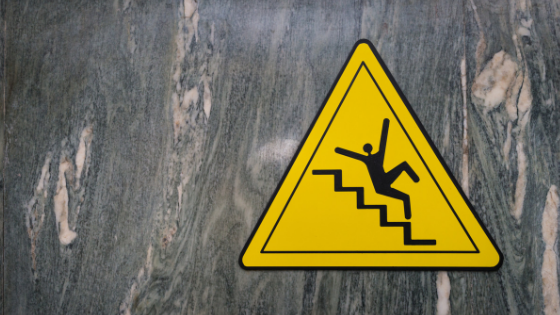In 2017, 5,147 workers died due to work-related accidents. That’s about 14 worker deaths each day.
Employers and employees alike know that the number is too high. The trouble is, for all your efforts to prevent workplace accidents, you’re not entirely sure what accidents you need to prevent.
Here are some of the most common workplace injuries and how you can keep your workplace safe from them.
1. Slips, Trips, and Falls
By far the most common workplace accident is slips, trips, and falls. The frightening part is that you don’t need to fall from a great height to suffer severe injury.
In 2016, 697 workers died from falls to a lower level, but an additional 137 died from falls on the same level. These accidents are most common in the construction and manufacturing industries, followed by wholesale and retail trade.
But slip and trip accidents can happen to any worker. All you need is the wrong angle and a hard fall to create serious brain damage, even if it’s a closed head injury.
The good news is that slips, trips, and falls are 100% preventable. Always make sure that hallways and work areas are clean and clear. If you plan to be on a ladder or scaffolding, discuss the task with coworkers ahead of time to determine what safety equipment is needed. Always check for hazards and play it safe.
2. Transportation-Related Accidents
Wherever there’s heavy equipment and moving vehicles, there’s always a potential accident waiting to happen. Vehicle-related accidents include things like:
- Being struck by a moving vehicle
- Being struck by objects falling from a vehicle
- Being crushed by a moving vehicle
- Being crushed by objects falling from a moving vehicle
- Being thrown from a moving vehicle
- Being crushed or trapped under an overturned vehicle
There are two main types of vehicle-related accidents:
- On the road
- In the workplace
Workers in the transportation industry are more likely to suffer these types of accidents, but they can happen to any worker.
Fortunately, they can be prevented.
You cannot control what another driver does, but you can control your own behavior. Always drive with caution and take care when walking near moving vehicles.
Employers can help reduce the risk of accidents by introducing safety systems and vehicle safety orientations in the workplace. If you can control your workplace, try to layout the workplace to minimize risk–keep pedestrians safely away from moving equipment and maximize visibility.
3. Overexertion and Repetitive Stress Injuries
Overexertion plays a key role in creating repetitive stress injuries and work-related musculoskeletal disorders. Common examples of these disorders include things like:
- Carpal tunnel syndrome
- Tendinitis
- Trigger finger
- Low back injuries
- Rotator cuff injuries
- Muscle strains
All of these are caused by repetitive movements or repeatedly putting the body into an awkward position.
The biggest way to prevent these disorders is by crafting a job to fit the worker rather than the other way around. In the eyes of OSHA, it is the employer’s responsibility to provide a safe, healthy workplace for their employees.
A strong commitment to safety culture is critical for managers. Define clear goals for progress toward a safer workplace, get employees involved, and create a work culture where employees feel safe in coming to you with their concerns.
Avoiding the Most Common Workplace Injuries
Steering clear of the most common workplace injuries is mostly a matter of preparation. If you prepare for the worst and hope for the best, you’ll have a far easier time keeping your workplace accident-free.
